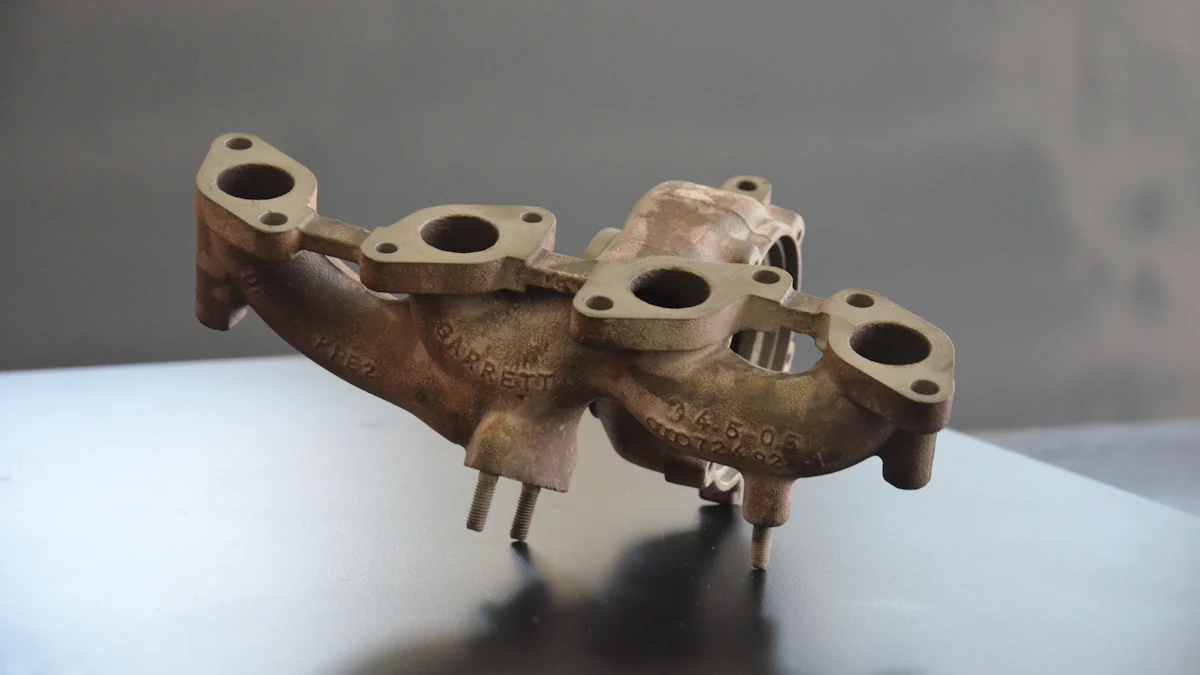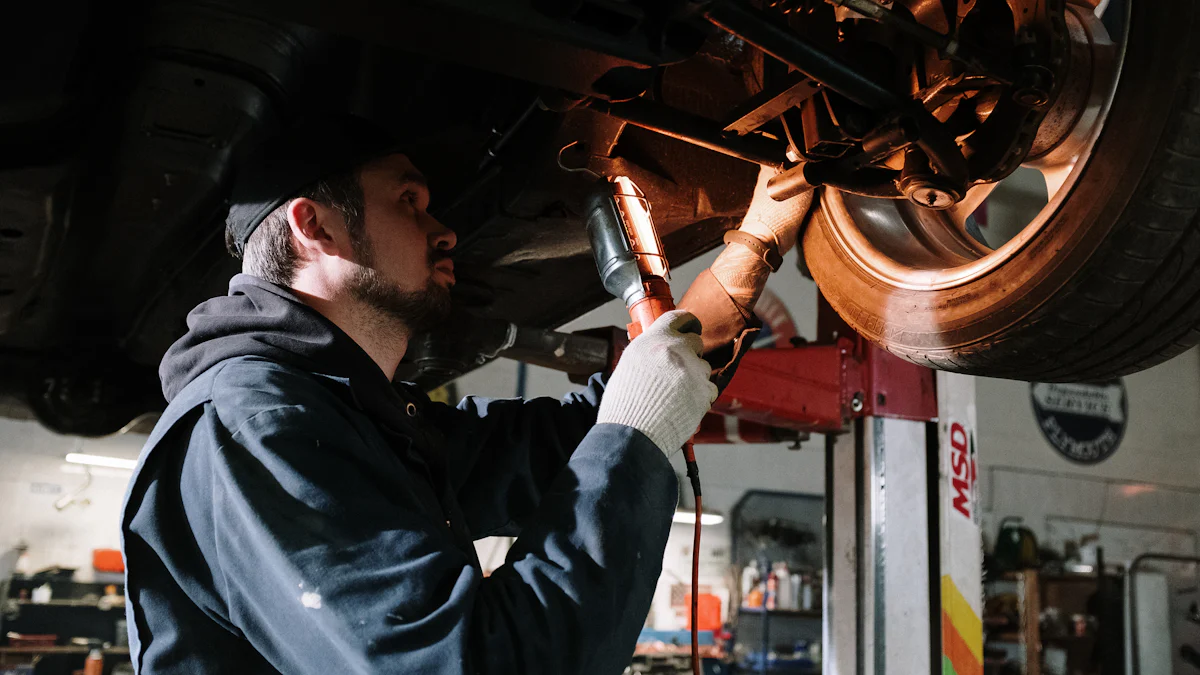
Proper torque application on c15 exhaust manifold torque is crucial for optimal engine performance. Understanding the significance of precise torque ensures a secure seal, preventing leaks that can compromise engine efficiency. In this blog, we delve into the essential aspects of c15 Engine exhaust manifold torque, guiding you through the process step by step. By mastering these techniques, you can enhance your vehicle’s reliability and longevity.
Importance of Proper Torque
When considering the Exhaust Manifold Torque Spec, understanding the importance of proper torque becomes paramount. Torque plays a significant role in ensuring the longevity and efficiency of your vehicle’s engine. Let’s explore why achieving the correct torque specifications is crucial for optimal performance.
Why Proper Torque Matters
Preventing Leaks
One key reason to adhere to the specified torque values is to prevent leaks within the exhaust system. Inadequate torque can lead to gaps between components, allowing exhaust gases to escape before reaching the catalytic converter. This not only affects emissions but also diminishes fuel efficiency and overall engine performance.
Ensuring Engine Performance
Properly torqued exhaust manifold fasteners contribute to maintaining optimal engine performance. By securing the manifold with precision, you ensure that there are no loose connections that could disrupt the flow of exhaust gases. This, in turn, helps maintain consistent engine power output and smooth operation across various driving conditions.
Consequences of Incorrect Torque
Engine Damage
Incorrect torque application on Exhaust Manifold components can result in severe engine damage over time. Under-tightening may cause parts to vibrate or shift during operation, leading to premature wear and potential failure. Conversely, over-tightening can distort or crack delicate components, compromising their structural integrity.
Increased Emissions
Inaccurate torque settings can directly impact emissions output from your vehicle. A poorly sealed exhaust system due to incorrect torque values can result in unfiltered pollutants being released into the environment. This not only contributes to air pollution but may also lead to regulatory compliance issues for your vehicle.
Understanding these implications underscores the critical nature of precise torque application when working on your General Engine components like exhaust manifolds.
Tools and Equipment

Essential Tools
When it comes to Exhaust Manifold Torque, having the right tools is essential for achieving precise results. The Torque Wrench is a crucial instrument that ensures accurate tightening of fasteners. It allows you to apply the specified torque values with precision, preventing under or over-tightening that could lead to potential issues. Additionally, a Socket Set is indispensable for accessing and securing bolts in tight spaces. With a variety of socket sizes, you can easily fit the appropriate socket onto the fastener, ensuring a secure connection.
Recommended Brands
High-Quality Options
For those seeking top-tier performance and reliability, Werkwell stands out as a reputable brand known for its exceptional quality products. Their commitment to precision engineering and durability makes them a preferred choice among automotive enthusiasts and professionals alike. When it comes to Torque Wrenches and Socket Sets, Werkwell offers a range of high-quality options designed to meet the demands of various applications. Investing in Werkwell tools guarantees accuracy and longevity, providing peace of mind during every project.
Budget-Friendly Choices
If you’re looking for cost-effective solutions without compromising on quality, consider exploring Budget-Friendly Brands that offer reliable performance at an affordable price point. While these brands may not carry the same prestige as high-end manufacturers, they provide adequate functionality for occasional use or DIY projects. By opting for budget-friendly options, you can still achieve satisfactory results without breaking the bank.
Step-by-Step Guide

Preparing the Manifold
To begin the process of cleaning the surface of the engine exhaust manifold, gather all necessary tools and ensure a well-lit workspace. Start by removing any debris or dirt from the surrounding area to prevent contamination during cleaning. Using a lint-free cloth, wipe down the manifold surface to remove any existing residue that may interfere with proper sealing. Inspecting the gasket is crucial to identify any signs of wear or damage that could compromise its effectiveness. Look for tears, cracks, or deformities that may indicate the need for replacement.
Applying the Torque
When initial tightening the fasteners on the exhaust manifold, use a systematic approach to ensure even pressure distribution. Begin by hand-threading each fastener to prevent cross-threading and facilitate alignment. Once all fasteners are in place, gradually tighten them in a crisscross pattern to promote uniform compression of the gasket. Avoid over-tightening at this stage to prevent damage to components. For the final torque application, use a calibrated torque wrench set to the recommended specifications for your specific engine model. Apply torque in incremental stages, alternating between fasteners until reaching the desired level.
Verifying the Torque
Double-checking specifications is a critical step in ensuring that all fasteners are properly torqued and secure. Refer to your engine’s service manual for the exact torque values and sequence required for your exhaust manifold. Using a torque wrench, validate each fastener’s torque level by reapplying pressure and confirming alignment with specifications. Conducting a test run after torquing ensures that there are no immediate issues with leaks or loose connections. Listen for abnormal noises or vibrations that may indicate improper sealing or insufficient tightening.
Common Mistakes to Avoid
Over-Tightening
When it comes to Exhaust Manifold Torque, one common mistake that individuals make is over-tightening the fasteners. This error can have significant consequences on the overall performance of the engine. By applying excessive force during torque application, there is a risk of damaging the components involved. The threads on the bolts or studs may get stripped, leading to a compromised seal between the manifold and the engine block. This could result in exhaust leaks, affecting both engine efficiency and emissions control.
Under-Tightening
Another critical error to avoid when dealing with c15 Exhaust Manifold Torque is under-tightening the fasteners. Failing to apply adequate torque can create gaps between the manifold and the engine, allowing exhaust gases to escape prematurely. This not only impacts engine performance but also poses safety risks due to potential exposure to harmful emissions. Insufficiently tightened fasteners may loosen over time, leading to further complications and potential damage to surrounding components.
Using Incorrect Tools
Selecting the proper tools for Exhaust Manifold Torque is essential in achieving optimal results and preventing costly mistakes. Using tools that are not designed for specific torque applications can lead to inaccuracies and inconsistencies in tightening fasteners. It is crucial to choose tools such as a calibrated torque wrench and compatible sockets that match the fastener sizes precisely. Failure to use appropriate tools may result in uneven torque distribution, risking leaks or component damage.
“I believe the question was about exhaust nut and intake bolt torque on an O-320.” – Anonymous User
Recapping the significance of precise torque application on exhaust manifolds is crucial for optimal engine performance. Following the recommended torque values meticulously prevents leaks and ensures engine efficiency. It is essential to adhere to proper torque procedures to maintain a secure seal and prevent potential damage. In conclusion, by prioritizing accurate torque application, you can safeguard your vehicle’s performance and longevity effectively. Remember, precision in torque matters for a well-functioning engine system.
Post time: Jun-05-2024



